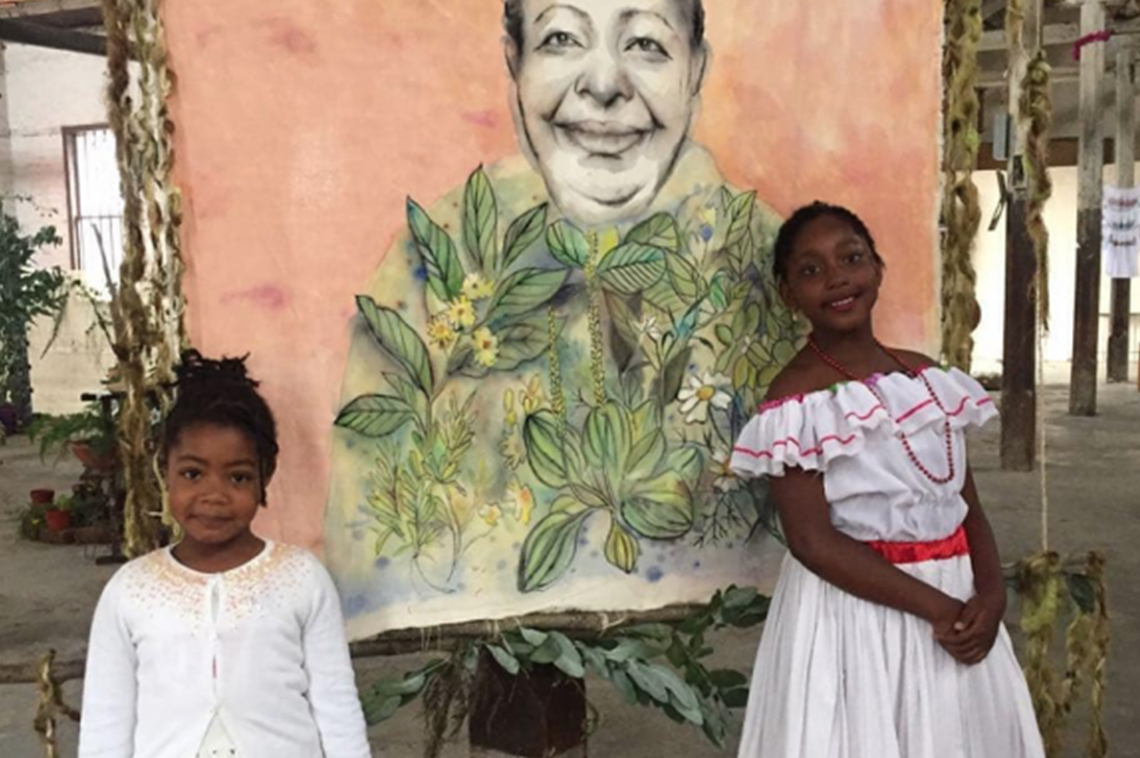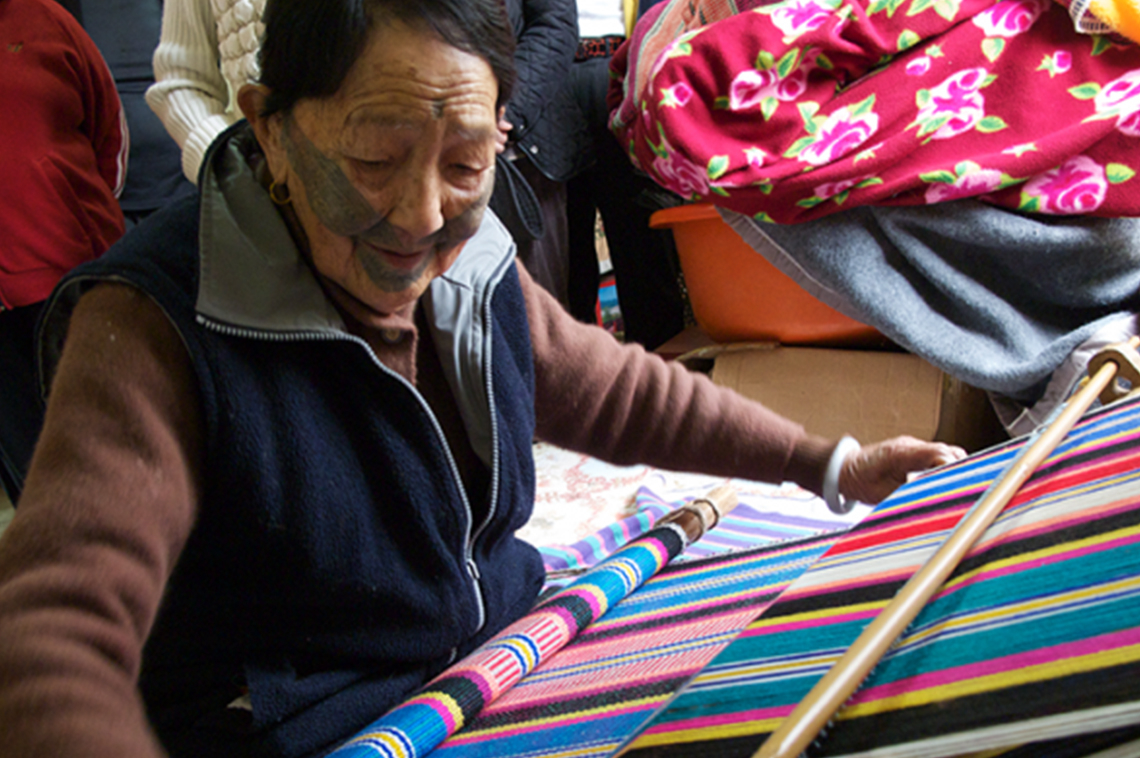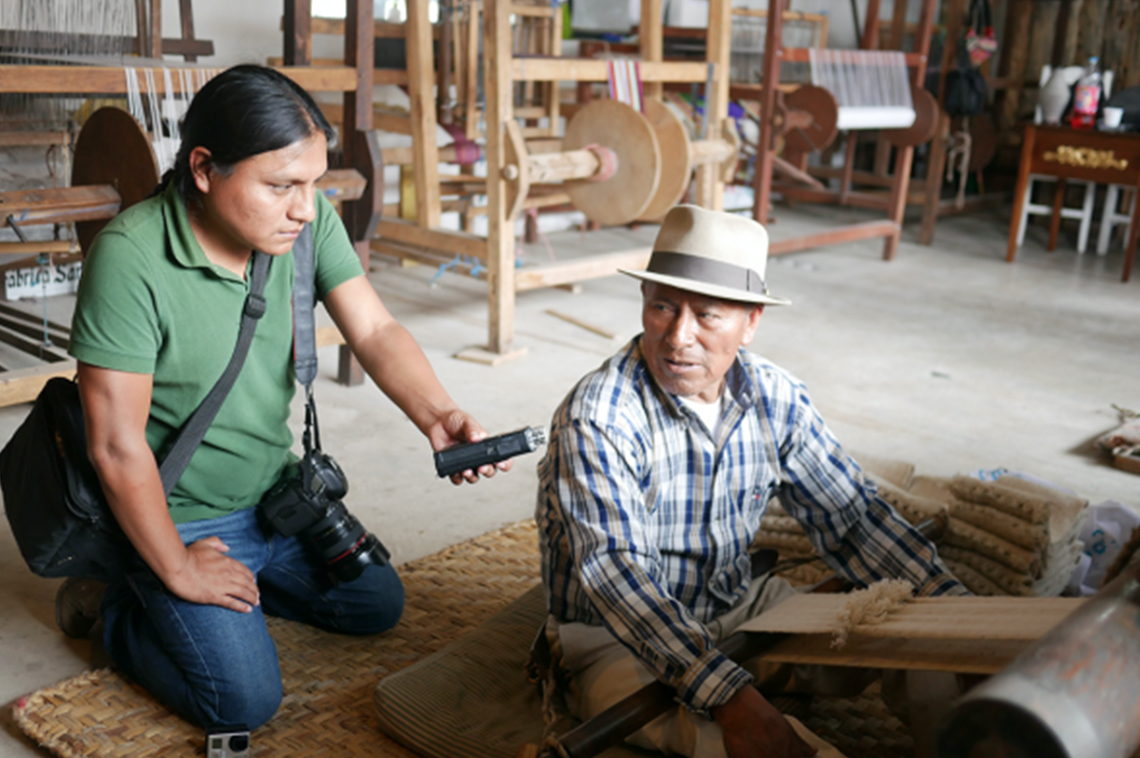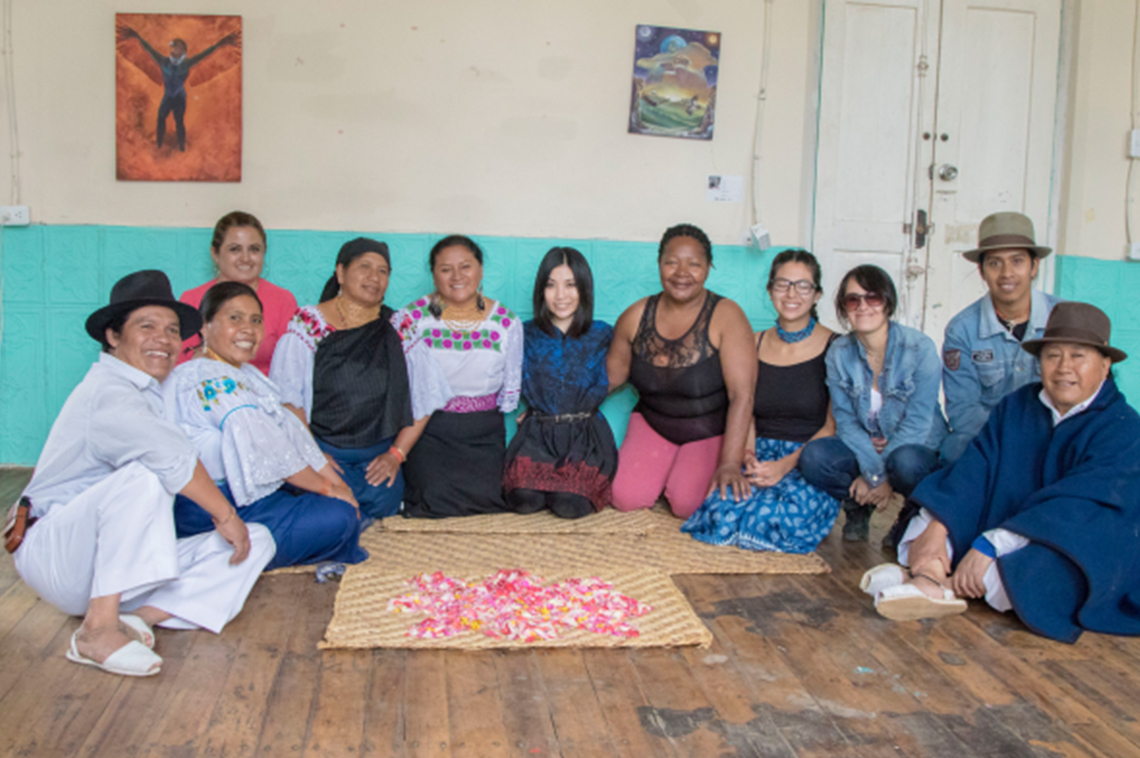



American Arts Incubator (AAI) is an international creative exchange program developed in partnership with the U.S. Department of State’s Bureau of Educational and Cultural Affairs and administered by ZERO1.
Beatrice Glow, one of their exchange artists, spent a month in Otavalo, Ecuador leading an American Arts Incubator exchange with a diverse group of community members, including Afro-Ecuadorian and Indigenous populations. The host partner organization was Casa de Artes Yarina that was based in Museo Otavalango. Together they used new media art to tell stories that shift dominant narratives — utilizing art and technology to address social inclusion.
“As a daughter of immigrants in Turtle Island (aka North America), I strive to be in allyship to the original peoples and the land and waters that nourish me by activating multisensory storytelling and interdisciplinary art, including sculptural installations, performances, lectures, community engagement, writing, olfactory art and experiential technology collaborations with Native culture bearers, creative technologists and scholars. This trajectory shaped my approach to the American Arts Incubator (AAI) exchange to support social inclusion of Indigenous and Afro-Ecuadorian populations.
My incubator participants varied in age, education level, socio-economic class and heritage backgrounds. Several came from different native communities in the Imbabura province while many others identify as mestizo. Trying to find a way to address social inclusion through art and technology within a new cultural context and such a diverse group required me to further explore cultural protocols, race relations and cultural specificities. The plan was to develop community projects that addressed social inclusion using cultural and educational methodologies. As we used digital art to reveal historical patterns of exploitation and intercultural strife, I was weary of replicating unbalanced power dynamics within our incubator. We had heated conversations on racial and gender equity. We searched for alternative terms to social inclusion and questioned concepts such as, "who has the power to include/exclude?"
When we think of the word ‘technology’, we often think of 20th century innovations. Yet, this incubator accounted for ancestral technology. I wanted to take this opportunity to broaden general conceptions of technology to include ancestral technologies such as weaving, agriculture, plant medicine and wayfinding. I credit my AAI mentor Cristóbal Martínez (read his writing on Tecno-Sovereignty: An Indigenous Theory and Praxis of Media Articulated Through Art, Technology, and Learning) who pointed out to me that weaving was the first computer and that we must always question the ideologies embedded within the technologies we use, and how they may occlude other forms of literacy and perpetuate power structures.
Museo Otavalango’s previous life until the eighties was the Fábrica San Pedro that employed native workers under harsh conditions to produce woven textiles. This was the first factory in Ecuador and produced woven goods made from "telar callua," a pre-Incan form of backstrap weaving. By the mid-19th century, the factory imported mechanical weaving looms from Boston to maximize production. Fast forward to 2018, and we are engaging digital media in an arts incubator to retrace the social history of the site through the impacts of the industrial revolution and the persistent threads of ancestral technology.
While I taught augmented reality workshops, I was also taking weaving classes in the old factory and getting an inkling of how contemporary machinery evolved from this ancient practice. Weaving is coding in binary motions, performing mathematical calculations, enacting geometry and executing precision. It is also about transmitting oral history, ancestral knowledge and following the movements of those who came before us in the social fabric.
Augmented Reality For Ancient Herbs
This process led to the formation of three community projects that each received small seed-grants to build project prototypes: Yuyay applies augmented reality to site-specific community murals, Mama Cuchara is an AR Spanish and Kichwa language book on medicinal plants, and Warmi Tukushka stages immersive theater with rural communities for a social tourism project in order to generate income for Indigenous communities. There were limits on how much I, as an artist, facilitator, admin, PR and community manager, teacher, exhibition designer, and translator could contribute to a community. Despite running the program with minimal infrastructural support — internet was often nonexistent, rain seeped into our tech workshop spaces, and I nearly fainted due to sleep deprivation compounded by altitude sickness — what we had was strong community spirit and ingenious resourcefulness thanks to my counterpart Ana Cachimuel, her family, as well as the participants. Our process was a co-inquiry on how new media can amplify voices critical to futurity and challenge the notion that indigeneity and modernity are incompatible.
This edited version comes from Beatrice Glow’s blog posts on The American Arts Incubator website, with permission of the organization and the author.
Read the full and fascinating story of Beatrice's project in chronological order:
- Towards Runificación: Weaving Indigenous Revitalization and Extended Reality (Feb. 19, 2018)
- Activating an Art, Community and Technology Incubator in the Andes (Apr. 2, 2018)
- In the Time of Corn: Harvest and Sustainable Growth (Apr. 29, 2018)
The ZERO1 program utilizes community-driven digital and new media art projects to instigate dialogue, build communities, bolster local economies, and further social innovation. In Ecuador, AAI was implemented in partnership with U.S. Embassy Quito and Casa de Artes Yarina in Otavalo.





